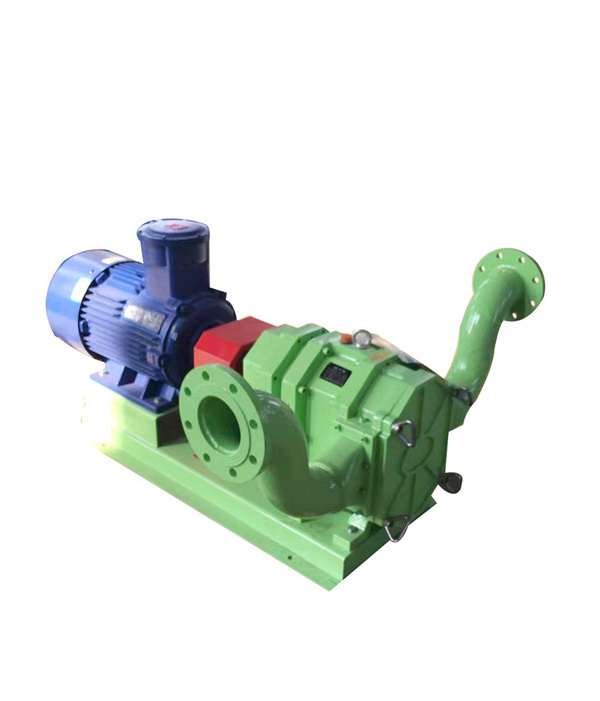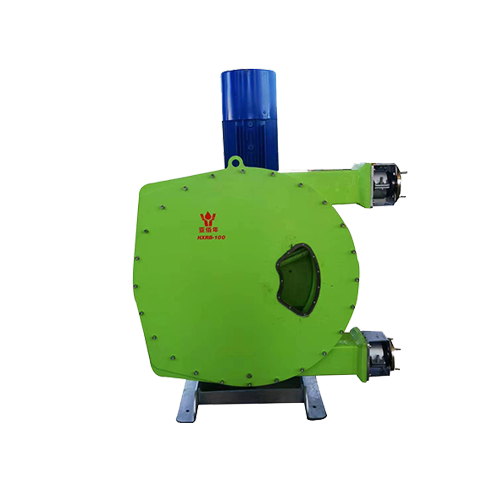Exploring the Benefits of Using Rubber Lobe Pumps in Wastewater Treatment
Mar 28,2025

Exploring the Benefits of Using Rubber Lobe Pumps in Wastewater Treatment
Table of Contents
- Introduction to Rubber Lobe Pumps
- What Are Rubber Lobe Pumps?
- Advantages of Using Rubber Lobe Pumps in Wastewater Treatment
- High Efficiency and Performance
- Durability and Reliability
- Positive Environmental Impact
- Cost-Effectiveness
- Applications of Rubber Lobe Pumps in Wastewater Treatment
- Maintenance of Rubber Lobe Pumps
- Case Studies: Successful Implementations
- The Future of Rubber Lobe Pumps in Wastewater Treatment
- Frequently Asked Questions
- Conclusion
Introduction to Rubber Lobe Pumps
In the quest for efficient wastewater treatment solutions, rubber lobe pumps have emerged as a vital technology. As industries face increasing pressure to manage waste effectively while adhering to environmental regulations, the need for reliable, efficient pumping systems has never been more crucial. Rubber lobe pumps offer distinctive benefits that make them a preferred choice for many wastewater treatment applications.
What Are Rubber Lobe Pumps?
Rubber lobe pumps are positive displacement pumps characterized by their unique lobe design made of rubber or elastomer materials. This design allows for the gentle handling of various fluids, including those with solids, without causing damage. The pump operates by rotating lobes that create a vacuum, drawing in the fluid and subsequently pushing it through the pump. This mechanism ensures a consistent flow rate and minimizes shear stress on the fluid, making it ideal for sensitive applications like wastewater treatment.
Advantages of Using Rubber Lobe Pumps in Wastewater Treatment
High Efficiency and Performance
Rubber lobe pumps are known for their high operational efficiency. Their design allows for high flow rates and pressures, which are critical in wastewater treatment processes. These pumps can handle various types of fluids, including sludge and slurry, maintaining performance even in challenging conditions. The ability to operate efficiently reduces energy consumption, contributing to lower operational costs.
Durability and Reliability
One of the significant advantages of rubber lobe pumps is their durability. The materials used in their construction, particularly rubber, are resistant to wear and tear, chemical exposure, and abrasion. This durability translates into a long operational life, reducing the frequency of replacements and repairs. For wastewater treatment facilities, this means less downtime and increased productivity.
Positive Environmental Impact
Using rubber lobe pumps in wastewater treatment has a positive impact on the environment. Their ability to handle waste gently reduces the risk of clogging and damage to the system, ensuring that treated water meets regulatory standards. Furthermore, their high efficiency lowers energy consumption, which can lead to reduced carbon emissions. By improving the reliability of wastewater treatment processes, these pumps contribute to better environmental outcomes.
Cost-Effectiveness
Investing in rubber lobe pumps can lead to significant cost savings in the long run. Their durability and low maintenance requirements mean that facilities spend less on repairs and replacements. Additionally, their energy-efficient operation reduces utility costs, making them a cost-effective solution for wastewater treatment. The initial investment may be higher than other pump types, but the long-term savings and benefits make them a smart choice.
Applications of Rubber Lobe Pumps in Wastewater Treatment
Rubber lobe pumps are versatile and can be used in various applications within wastewater treatment facilities. Typical uses include:
- **Sludge transfer**: Their ability to handle thick, viscous fluids makes them ideal for transporting sludge from primary to secondary treatment stages.
- **Chemical dosing**: Rubber lobe pumps can accurately meter chemicals needed for coagulation, flocculation, and disinfection processes.
- **Wastewater transport**: These pumps are effective in moving raw wastewater through the treatment process, ensuring a consistent flow.
Maintenance of Rubber Lobe Pumps
Proper maintenance of rubber lobe pumps is essential to ensure their longevity and optimal performance. Regular maintenance tasks include:
- **Routine inspections**: Check for wear on the lobes and seals to prevent leaks and ensure efficient operation.
- **Lubrication**: Keep moving parts well-lubricated to reduce friction and wear.
- **Monitoring performance**: Track flow rates and pressures to identify any changes that may indicate a need for service.
Implementing a proactive maintenance program can help avoid costly repairs and extend the life of the pump.
Case Studies: Successful Implementations
Numerous wastewater treatment facilities worldwide have successfully integrated rubber lobe pumps into their operations. Here are a few notable examples:
- **Case Study 1**: A municipal wastewater treatment plant in California replaced its aging centrifugal pumps with rubber lobe pumps. This transition resulted in a 30% increase in efficiency and significantly reduced maintenance costs.
- **Case Study 2**: An industrial facility in Texas utilized rubber lobe pumps for sludge transfer, achieving a more consistent flow rate and reducing energy consumption by 25%.
- **Case Study 3**: A food processing plant in Florida adopted rubber lobe pumps for chemical dosing, leading to improved accuracy in chemical delivery and better overall treatment outcomes.
These case studies highlight the adaptability and effectiveness of rubber lobe pumps in various wastewater treatment scenarios.
The Future of Rubber Lobe Pumps in Wastewater Treatment
As technology advances, rubber lobe pumps are expected to become even more efficient and versatile. Innovations in materials and design may lead to pumps with enhanced wear resistance and energy efficiency. Moreover, the growing emphasis on sustainability in wastewater treatment will likely drive increased adoption of rubber lobe pumps due to their environmentally friendly attributes.
Furthermore, the integration of smart technologies, such as IoT sensors, can facilitate real-time monitoring and predictive maintenance, ensuring optimal performance and minimizing downtime. The future of rubber lobe pumps in wastewater treatment looks promising, with ongoing improvements likely to enhance their already substantial benefits.
Frequently Asked Questions
1. What types of fluids can rubber lobe pumps handle?
Rubber lobe pumps are capable of handling a wide range of fluids, including those with solids, sludge, and viscous materials, making them well-suited for wastewater treatment applications.
2. How often should rubber lobe pumps be serviced?
Regular maintenance is crucial for rubber lobe pumps. It's advisable to perform routine inspections every few months, depending on usage, and address any wear or performance issues promptly.
3. Are rubber lobe pumps energy-efficient?
Yes, rubber lobe pumps are designed for high efficiency, which helps reduce energy consumption during operation. Their design allows for consistent flow rates with minimal energy loss.
4. Can rubber lobe pumps be used for chemical dosing?
Absolutely! Rubber lobe pumps can accurately meter chemicals in wastewater treatment processes, ensuring precise dosing for optimal treatment outcomes.
5. What is the lifespan of rubber lobe pumps?
The lifespan of rubber lobe pumps depends on several factors, including maintenance practices and operational conditions. However, with proper care, these pumps can have a long operational life, often exceeding ten years.
Conclusion
Rubber lobe pumps are a vital innovation in the wastewater treatment industry, offering numerous advantages that enhance operational efficiency, durability, and environmental sustainability. Their ability to handle various fluids, coupled with their cost-effectiveness, makes them an ideal choice for many facilities. As the industry evolves, rubber lobe pumps will continue to play a crucial role in ensuring effective and sustainable wastewater management. By adopting this technology, wastewater treatment facilities can achieve better performance, lower operational costs, and contribute positively to environmental conservation.
Contact Us
E-mail :
sales@yaquanpump.com
service@yaquanpump.com
Phone/WhatsApp:
+44 7301702546
+63 9452052801
Address:
Room B208, Building 2, North Hongqiao Songri Center, No.215 Gaochao Road, Jiading District, Shanghai









